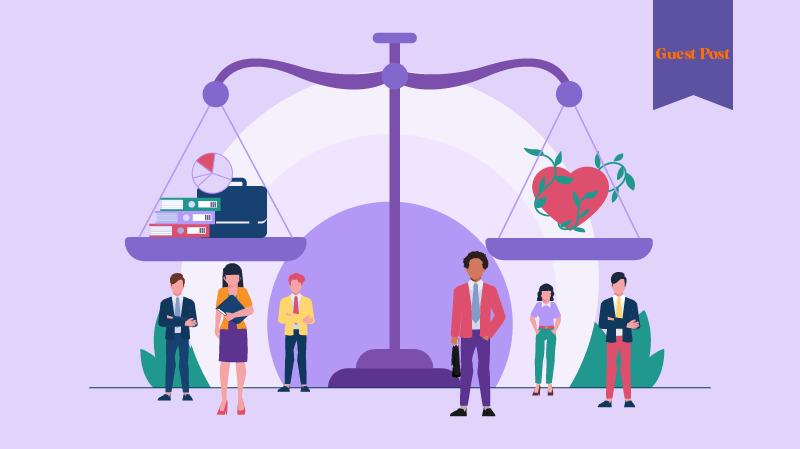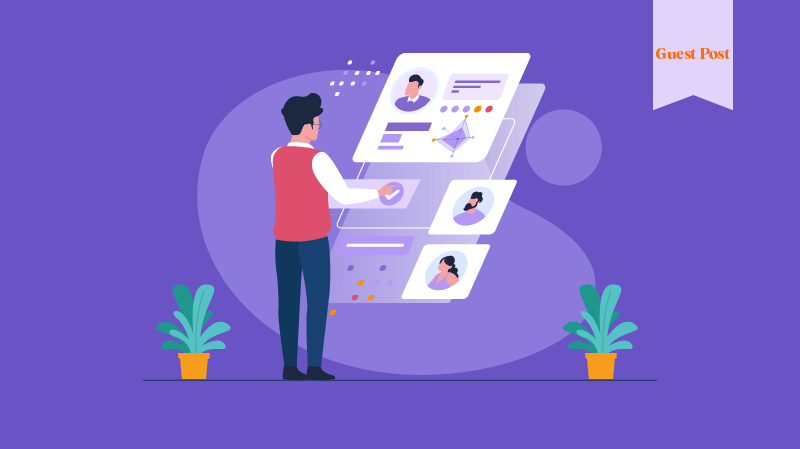7 Hidden Links Between Employee Experience And Collaboration
If you work in HR, you know how important it is to ensure a great employee experience for everybody in your organization.
However, employee experience is a very wide term and encompasses multiple aspects of work life. As more and more organizations adopt hybrid work models, they need to ensure that the quality of employee experience doesn’t decrease.
What Is Employee Experience?
By employee experience, we mean everything that (you’ve guessed it) employees experience during their time working for an organization. From day one to the day they leave the company, everything an employee does, goes through, feels, and learns— gets factored in.
As such, employee experience is inevitably connected to employee satisfaction, happiness, engagement, and others. There are numerous influences to it, starting from leadership and stretching to how important moments during an employee lifecycle are handled.
For example, one of the simplest ways to improve employee experience is to mark and celebrate work anniversaries. A more complex but incredibly important way is to invest in managers’ leadership skills constantly.
How Collaboration Adds To Employee Experience?
Collaboration has many benefits for organizations and employees themselves.
On one hand, collaboration is conducive to innovation and better problem-solving. On the other hand, employees connect and communicate much better when they collaborate.
It is very beneficial for the employee experience. Here are specific reasons for how collaboration in the workplace can enhance employee experience.
1. Creates A Sense Of Community
When employees collaborate intensely, it can create a sense of belonging. Working on and achieving the same goals is the essence of making strong performing teams. As teams collaborate more intensely, the stronger their bond gets.
One of the most important aspects of employee experience is meaningful work and a sense of belonging to an organization. Frequent collaboration also creates more opportunities to reward and recognize your colleagues’ contributions.
2. Fosters Trust
When employees collaborate more intensely, the trust among them increases. Having good work relationships and healthy workplace culture is a major part of employee experience.
When employees trust each other, they are more likely to share information and different insights.
3. Breaks Down Organizational Silos
Employee experience can be hindered by organizational silos and difficult access to information. However, cross-functional collaboration can help break down silos and facilitate better relationships among employees from different departments.
4. Improves Onboarding Process
Employee onboarding is one of the first steps in employees’ journey within the organization. It is an event when employers can greatly impact and optimize employee experience from the get-go.
Onboarding processes will be more comprehensive and efficient if numerous people contribute to its planning and implementation.
Including line managers, colleagues that have been onboarded recently, and others into creating an onboarding process can help new hires get settled in more quickly and effectively.
5. Enhances Employee Engagement
There is little room for slacking when employees collaborate. This is why it is an excellent way to improve employee engagement. As you are probably aware, it is vital to obtain high engagement levels throughout the employee lifecycle. It leads to increased productivity and performance and is an important aspect of any employee retention strategy.
6. Helps In Learning And Development
Employees want opportunities to learn and develop their skills. It can play a crucial role in employee experience, especially for Millennials and Gen Z, since they are eager to advance their careers.
Apart from formal training and development policies, employees can learn and grow by collaborating. Some skills are easily transferable within a team, and younger employees can often learn from their more experienced colleagues or leaders.
7. Makes Remote Employees Feel Less Isolated
Since 2020, many employees have switched to remote work. Many organizations decided to keep remote or hybrid work policies in place for the foreseeable future. Although these work models have many advantages, they also carry a risk of isolating employees.
When employees feel alone or alienated, their engagement drops, and employee experience decreases in quality. However, by fostering a culture of collaboration, remote employees can feel more connected to their teams and organizations.
Improve employee experience by facilitating seamless collaboration
Successful and productive collaboration can improve the employee experience. However, poor communication patterns and ineffective collaboration can hinder it. That’s why it’s important to structure collaboration efforts and stick to best practices.
1. Set Clear Goals And Objectives
Any type of collaboration is easier and more productive when teams have common goals to align on. Moreover, collaboration is more effective when there is an assigned project leader.
This will not only increase the quality of collaboration but make it more streamlined and enjoyable for participants. Ultimately, it will diminish potential frustration and upgrade the experience of working in a team.
2. Work On Communication Skills
Communication and collaboration skills are among the most sought-after soft skills in general. Employees that know how to communicate effectively will more easily achieve desired results in a team environment. What this includes is listening, clarity, responsiveness, empathy, respect, and more.
Moreover, investing in communication skills by providing workshops, training, and courses is helping employees to grow in their roles, which is a significant part of employee experience.
3. Diversify Communication
When in the office, employees communicate more naturally since they can just walk up to their colleagues and ask for help. However, when working remotely, too much communication via the same channel can be overwhelming.
Diversifying communication is one of the best ways to improve employee experience when working remotely. For example, instant messaging platforms enable communication via chat, video, voice messages, and more. It helps everybody to stay connected but not to get stuck on endless calls.
4. Easy-to-use Tools
A major aspect of employee experience is technology. Nowadays, some apps make it easier than ever to recognize employees, give them feedback, and enable them to work from anywhere in the world.
It’s the same with collaboration. When apps are user-friendly, employees will be more likely to actually use them. Solutions that enable seamless day-to-day collaboration can make a real difference to those that need to collaborate frequently.
However, companies must make sure that their tools always adhere to the highest data security standards. It is why organizations often opt for encrypted messaging apps.
5. Frequent Feedback
Everybody needs- and wants- frequent feedback. All of us want to know how we’re doing and how to improve. By evaluating their team members’ collaboration efforts, leaders are helping their team members to improve their overall performance, leading to an optimized employee experience.
Conclusion
When teams collaborate efficiently, the outcome of their projects gets better. On the way, they also learn from each other and improve their communication skills. This can significantly improve their employee experience.
However, employee experience is a much broader concept and needs to be approached holistically to deliver the best results. Read this employee experience guide to learn its core components and best optimization strategies.














